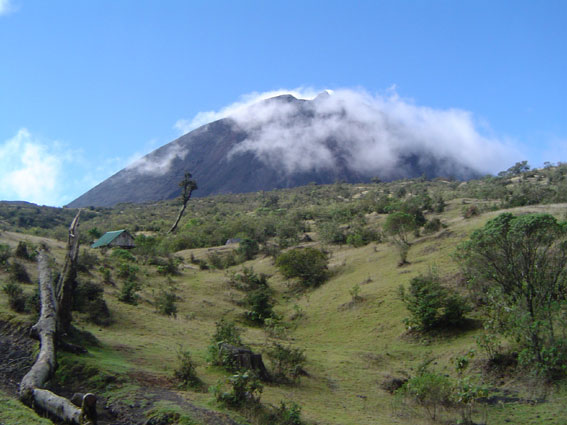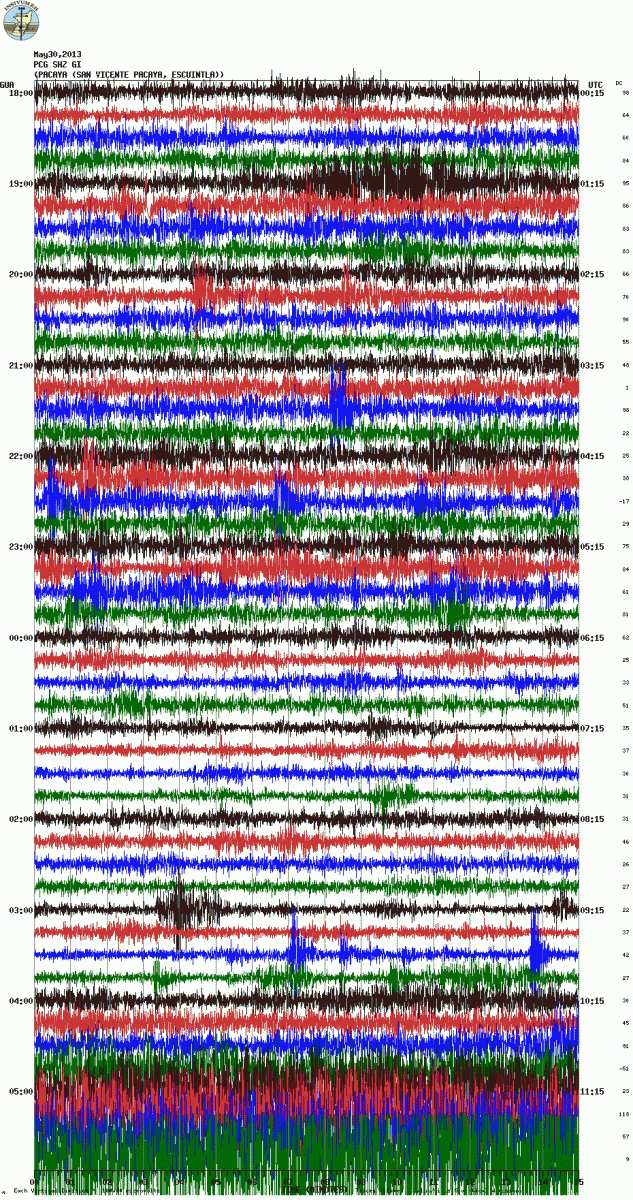Increase in seismic activity and effusion type eruption at Pacaya volcano, Guatemala

According to authorities the Pacaya volcano in Guatemala had small, effusion type, eruption on Thursday, May 30, 2013. The volcanic material was sent about 200 meters in the air.
In a report published today INSIVUMEH states that Pacayá has continued its process of activity through small explosions and arrival of magma to the crater. A small, effusive type, eruption lasted about two hours. They recommend that people in the vicinity be careful to the information provided by other means.
During May 22-23 a weak strombolian type activity was detected by the seismic network at Pacaya's MacKenney cone. On May 24 white plumes rose 600 m and drifted south. In a special bulletin on May 25, INSIVUMEH noted that the eruptive pattern had changed during the previous few days. Explosions were more continuous and energetic, and were detected 3-5 minutes apart. Explosions ejected bombs and generated rumbles heard 4 km away. Cloud cover mostly prevented views on May 27, but blue gas plumes were observed. Occasional weak glow from the crater was observed on May 28 (WR -GVP).
The current seismogram suggests that a strong increase in seismic activity has started (VD).

Seismic recording from Pacaya on May 30, 2013 (PCG station, INSIVUMEH)
There is a possibility that the eruption could intensify with plumes of ash rising as high as 1000 to 2000 meters. This would pose great problems for aviation at Guatemala`s international airport.
Ash could spread over Guatemala City due to the direction of the wind, Guatemala's disaster response office stated.
In May 2010, when the last significant eruption of Pacaya occurred, a television journalist died, thousands of people were driven from their home, and Guatemala City airport was closed for five days.
Here is a video of today`s eruption:

During the past several decades, activity at Pacaya has consisted of frequent strombolian eruptions with intermittent lava flow extrusion that has partially filled in the caldera moat and armored the flanks of MacKenney cone, punctuated by occasional larger explosive eruptions that partially destroy the summit of the cone (GVP).
Featured image: Volcan de Pacaya. Photo credit: Mariel Castro, April 17, 2006

Commenting rules and guidelines
We value the thoughts and opinions of our readers and welcome healthy discussions on our website. In order to maintain a respectful and positive community, we ask that all commenters follow these rules.